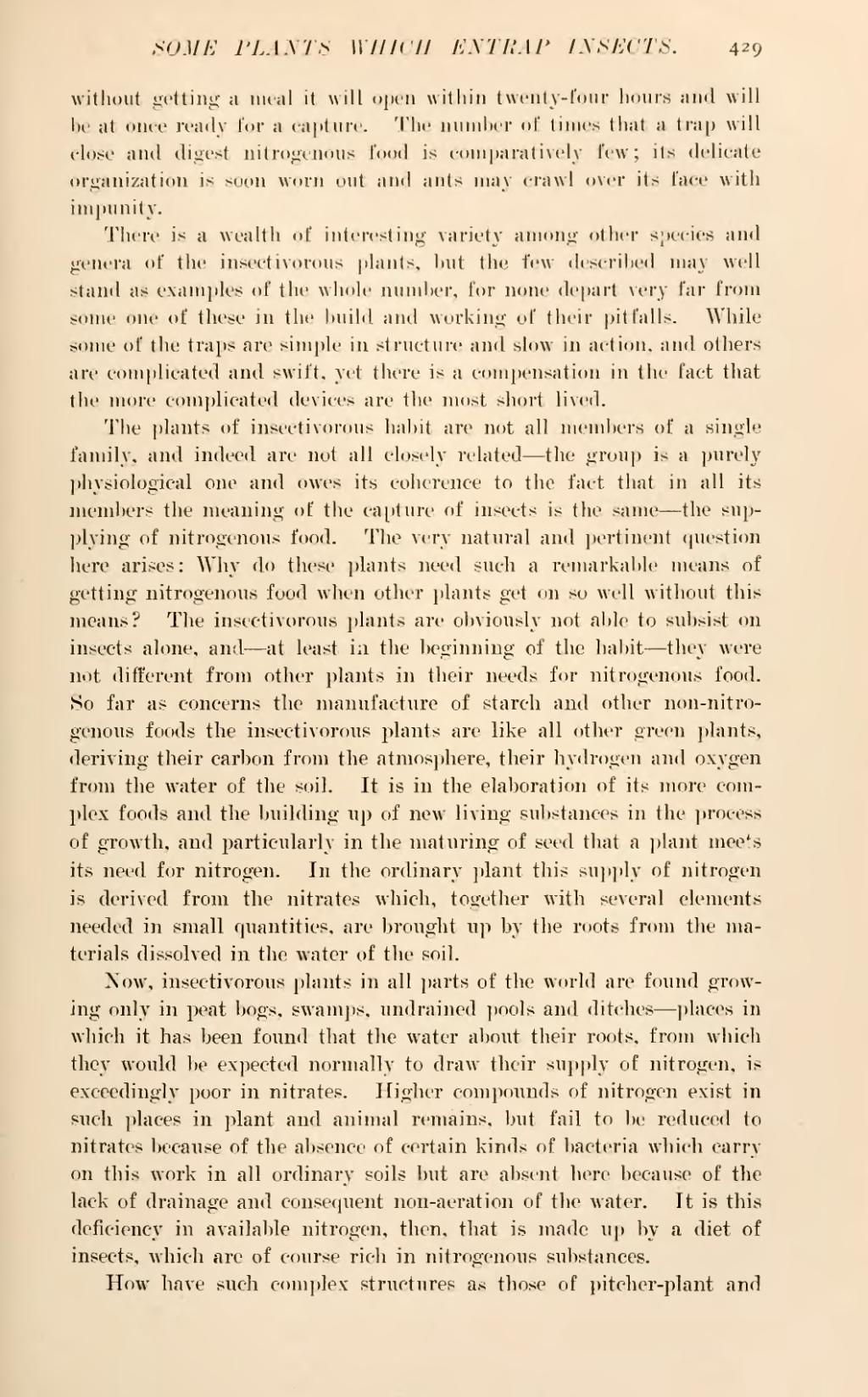without getting a meal it will open within twenty-four hours and will he at once ready for a capture. The number of times that a trap will close and digest nitrogenous fond is comparatively few; its delicate organization is soon worn out and ants may crawl over its face with impunity.
There is a wealth of interesting variety among other species and genera of the insectivorous plants, but the few described may well stand as examples of the whole number, for none depart very far from sonic one of these in the build and working of their pitfalls. While some of the traps are simple in structure and slow in action, and others are complicated and swift, yet there is a compensation in the fact that the more complicated devices are the most short lived.
The plants of insectivorous habit are not all members of a single family, and indeed are not all closely related—the group is a purely physiological one and owes its coherence to the fact that in all its members the meaning of the capture of insects is the same—the supplying of nitrogenous food. The very natural and pertinent question here arises: Why do these plants need such a remarkable means of getting nitrogenous food when other plants get on so well without this means? The insectivorous plants are obviously not able to subsist on insects alone, and—at least in the beginning of the habit—they were not different from other plants in their needs for nitrogenous food. So far as concerns the manufacture of starch and other non-nitrogenous foods the insectivorous plants are like all other green plants, deriving their carbon from the atmosphere, their hydrogen and oxygen from the water of the soil. It is in the elaboration of its more complex foods and the building up of new living substances in the process of growth, and particularly in the maturing of seed that a plant meets its need for nitrogen. In the ordinary plant this supply of nitrogen is derived from the nitrates which, together with several elements needed in small quantities, are brought up by the roots from the materials dissolved in the water of the soil.
Now, insectivorous plants in all parts of the world are found growing only in peat bogs, swamps, undrained pools and ditches—places in which it has been found that the water about their roots, from which they would be expected normally to draw their supply of nitrogen, is exceedingly poor in nitrates. Higher compounds of nitrogen exist in such places in plant and animal remains, but fail to be reduced to nitrates because of the absence of certain kinds of bacteria which carry on this work in all ordinary soils but are absent here because of the lack of drainage and consequent non-aeration of the water. It is this deficiency in available nitrogen, then, that is made up by a diet of insects, which are of course rich in nitrogenous substances.
How have such complex structures as those of pitcher-plant and
